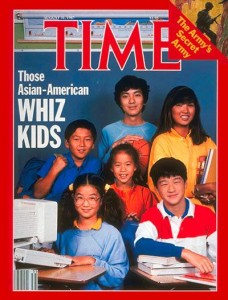Sometimes I just need a space where I can be as Asian as I want to be.
So when I had the opportunity to go to the South East Regional Conference for Asian American Leaders in Atlanta, I thought why not? I didn’t expect much (except maybe to find people who love Korean Dramas as much as I do or a really cute desi guy…)
I was pleasantly surprised. Not only did I meet tons of other Asian American activists, I had great conversations with people who cared about these issues.
The conference had many workshops aiming to discuss may different topics including voting, leadership, activism, and intersectionality. My most favorite part of the whole conference was definitely the last workshop I attended. Titled “From Here to Home: Asians in Reproductive Justice” this workshop aimed to discuss sexuality and our experiences with it as Asian Americans (shout out to Sadia Arshad for presenting this dope workshop).

The workshop started heavy. Sadia asked us to brainstorm things we think of/heard of when we think Asian American, and it wasn’t G-rated. In the first five minutes we came up with anything and everything – small penises, terrorists, model minorities, chink, submissive, 7/11 and exotic. Afterwards we did a crash course on Asian American history starting from 1834 to 2015 so that we can see the origins of some of these stereotypes and how they’ve been created over time.
This. Timeline. Gave. Me. Life.
Let me explain, I have never had an Asian American history class in my life. In fact, the only history I have ever been taught in school regarding Asian Americans was about the building of the railroads and maybe a day on internment camps. Asian Americans are practically invisible when it comes to American History, even though we’ve been here since the 19th century. But this timeline wasn’t just feeding information to my starved body, reading these events in chronological order, back to back, made me realize how Asians American have been man-handled in this country. History is so important in understanding why the perceptions of Asians American today exist. I’ll lay some examples down for you:

- 1875 Congress passes the Page Act, which effectively ended the entry of unmarried Asian women into the country as a way of limiting family development. This happened because of the accusation that Asian women bring prostitution to the country, although prostitution was fairly common among many nationalities.
- 1941: LIFE publishes “How to Tell Japs from the Chinese”. “…LIFE here adduces a rule‐of‐thumb from the anthropometric conformations that distinguish friendly Chinese from enemy alien Japs.”
- 1943: Evidence emerges that Japanese women were sterilized at internment camps
- 1966, Model Minority Term Coined Towards Asian Americans. The term “model minority” first coined by white sociologist William Petersen in an article he wrote for The New York Times Magazine, “Success story: Japanese American style”.
- 1982: Vincent Chin Protest. Vincent Chin was a Chinese American murdered in Detroit, Michigan by Chrysler superintendent Ronald Ebens, and his stepson Michael Nitz.
- 2001: The U.S PATRIOT Act is passed by Congress with virtually no debate. The PATRIOT Act gives the federal government the power to detain suspected “terrorists” for an unlimited time period without access to legal representation. Over 1000 Arab, Muslim, and South Asian men are detained in secret locations.

- 2015: Purvi Patel is sentenced to 20 years in prison for miscarriage. Purvi Patel, a young Indian woman living in Indiana, was charged with felony child neglect and feticide after having a miscarriage which prosecutors claimed was actually a self‐induced abortion.
After reading everything, its amazing how much the perceptions of Asian-Americans are rooted in power and politics. At one time Japanese-Americans were the best people in America, with great education and work ethic. Politicians needed to show people that minorities can be successful in America — the Japanese did it, why can’t you (other minorities, namely black and latino)? Then, when the Japanese became our enemies in WWII, articles popped up about how to tell them apart from the amazing Chinese people (who are now our friends).
Unfortunately, I probably would have never gotten any of this information if I didn’t go to this conference (or any Asian-American conference). Knowledge is power, and without the knowledge of our history and the power that brings us how can we aim to change anything?
To all non-Asian Americans, come to these conferences, learn about our history. There were plenty of non-Asian Americans at this conference and they contributed in very meaningful ways (I’m sure they learned a lot too).
The point is, if we are trying to affect change in our communities, we have to know our history, what we have done so far, and who our allies are. We wont get that is we sit down and only absorb the information that is given to us by mainstream American culture and education.
(Credits to Sadia Arshad for presenting the history of Asian Americans and National Asian Pacific American Women’s Forum for the Timeline)streaming Back to the Future movie



